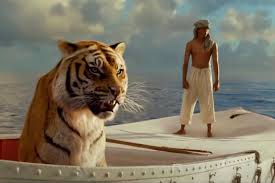Through the Eyes of an Eight-Year-Old
By Peter Pavarini

Spending two weeks in the mountains with an eight-year-old girl helps you to see the world again through the eyes of youth.
For many years, the Blue Ridge Mountains of North Carolina have provided my wife and I with an escape from the craziness of the adult world. But not until we began visiting this mountain community with our granddaughter had our retreat included experiencing Appalachia the way a child would. I’ve been happily spending the past week collecting bugs and mushrooms, looking for signs of bears, and re-learning the ring toss game we have on our porch.
After several active days of swimming in the lake, hiking to Devil’s Courthouse and getting our canoe ready for its first voyage in years, grandpa needed a quiet day at home. It occurred to me that our granddaughter hadn’t had any screen time since we arrived. So, I looked through our rather limited video library for something she might be interested in. The best I could come up with was the 2012 film The Life of Pi which for some reason I had never seen. Although the online reviewers of the movie said it wasn’t appropriate for children under 12, I couldn’t believe a story about a boy on a boat with a Bengal tiger would do her any harm.
The Message of The Life of Pi
On one level, The Life of Pi (both the movie and Yann Martel’s novel[i]) depicts a young man’s struggle for survival at sea against insurmountable odds. After losing his entire family in a Pacific Ocean shipwreck, Pi incredibly survives 227 days adrift in a lifeboat with four zoo animals – only one of which lives the entire trip. From an adult’s perspective, the story is really about Pi’s faith in God and whether it can survive his loss of innocence.
After watching the movie with my granddaughter for the first time, I asked her whether she understood the story. She responded, “Maybe”. The following day, I asked her whether she wanted to see the video again. Smiling brightly, she said, “Yes, I do.” So, that’s what we did. Honestly, I wanted to see it again as much as she did because I felt I had missed key aspects of the film’s deeper message.
Yes, The Life of Pi can be understood simply as an adventure story like Treasure Island, but it’s also an allegory for some of life’s biggest questions. The one question that both my granddaughter and I felt most challenged by was how do we know what’s true and what isn’t?
During the movie, Pi tells two different stories about what happened to him while he was lost at sea. The one that resonated with audiences – both adult and young – was the tale about the Bengal tiger, the zebra, the orangutan, and the hyena. But the story that ultimately seems closer to the truth is the one Pi eventually tells the two Japanese men who are investigating the cause of the shipwreck. This one was graphic[ii] and not meant for a child.
From Yann Martel’s novel, the following dialogue reveals the crux of the book:
Pi Patel: “So tell me, since it makes no factual difference to you and you can’t prove the question either way, which story do you prefer? Which is the better story, the story with the animals or the story without the animals?”
Mr. Okamoto: “That’s an interesting question.”
Mr. Chiba: “The story with the animals.”
Mr. Okamoto: “Yes. The story with animals is the better story.”
Pi Patel: “Thank you. And so it goes with God.”
The Power of Storytelling
Humans have told stories since the beginning of time. Neuroscientists say our brains are hardwired for learning, teaching and remembering through the story form. For reasons not fully understood, listening to a well-told story lights up the same parts of the brain that would be activated if the listener were living the story in real time. Stories are how an older generation passes on wisdom to a younger generation – how to confront an obstacle, explore alternative strategies, and learn from the mistakes and triumphs of others. Every person has a story to tell that can inspire change in another person.
At a time when so many young people reject the concept of absolute truth (i.e., “my truth” or “my lived experience” isn’t the same as yours), it’s easy to conclude that Yann Martel’s story is one based on a relativistic view of what is true. On the other hand, Pi’s fascination with (and to some degree adherence to) three different religions – Hinduism, Christianity and Islam, and his rejection of his father’s scientific atheism suggests otherwise. Indeed, Pi’s disdain for “dry, yeastless factuality”[iii] in favor of stories that amaze and inspire clearly points to the role of faith in his life.
The Importance of Faith
Something may be factually true but be devoid of the emotional qualities that linger longer in a person’s psyche. Faith in something one can neither prove nor disprove by science is what makes a 4,000-year-old Bible story so compelling even when there is no evidence of such things happening today.
And that’s why I was able to share my granddaughter’s delight when she saw a family of black bears cross our property the other day. Creatures that previously had only been characters in her storybooks were right there a few dozen yards away munching on the dogwood berries in our yard. The mushrooms she found that were as big as basketballs were no longer two-dimensional illustrations in a children’s book but were right below her feet as we hiked through the deep forest. The illusion of flying in the air like Peter Pan didn’t seem so improbable after she looked down from a thousand-foot-tall granite cliff at the verdant valley below.
This is also why I’m glad we watched the “age-inappropriate” Life of Pi together. No one was telling her what to believe. She was free to reach her own conclusions about the story. With her deep love of God and his creation and her unquenchable desire to learn, we both experienced the power of a well-told story.
As I write this, I’m satisfied knowing that the memories we made are ones that will last a lifetime.
[i] Yann Martel, Life of Pi: A Novel, Mariner Books (2001).
[ii] In the alternate version, Pi confesses to what he had to do in order to survive, including stealing food and killing a man.
[iii] Life of Pi: A Novel at Chapter 21.

Be First to Comment